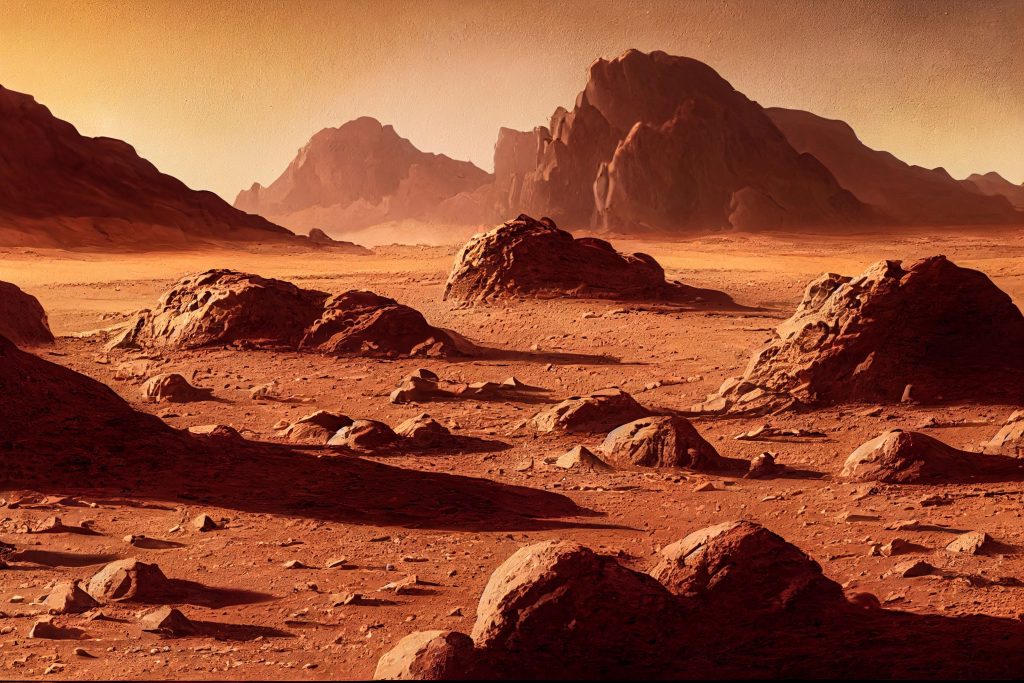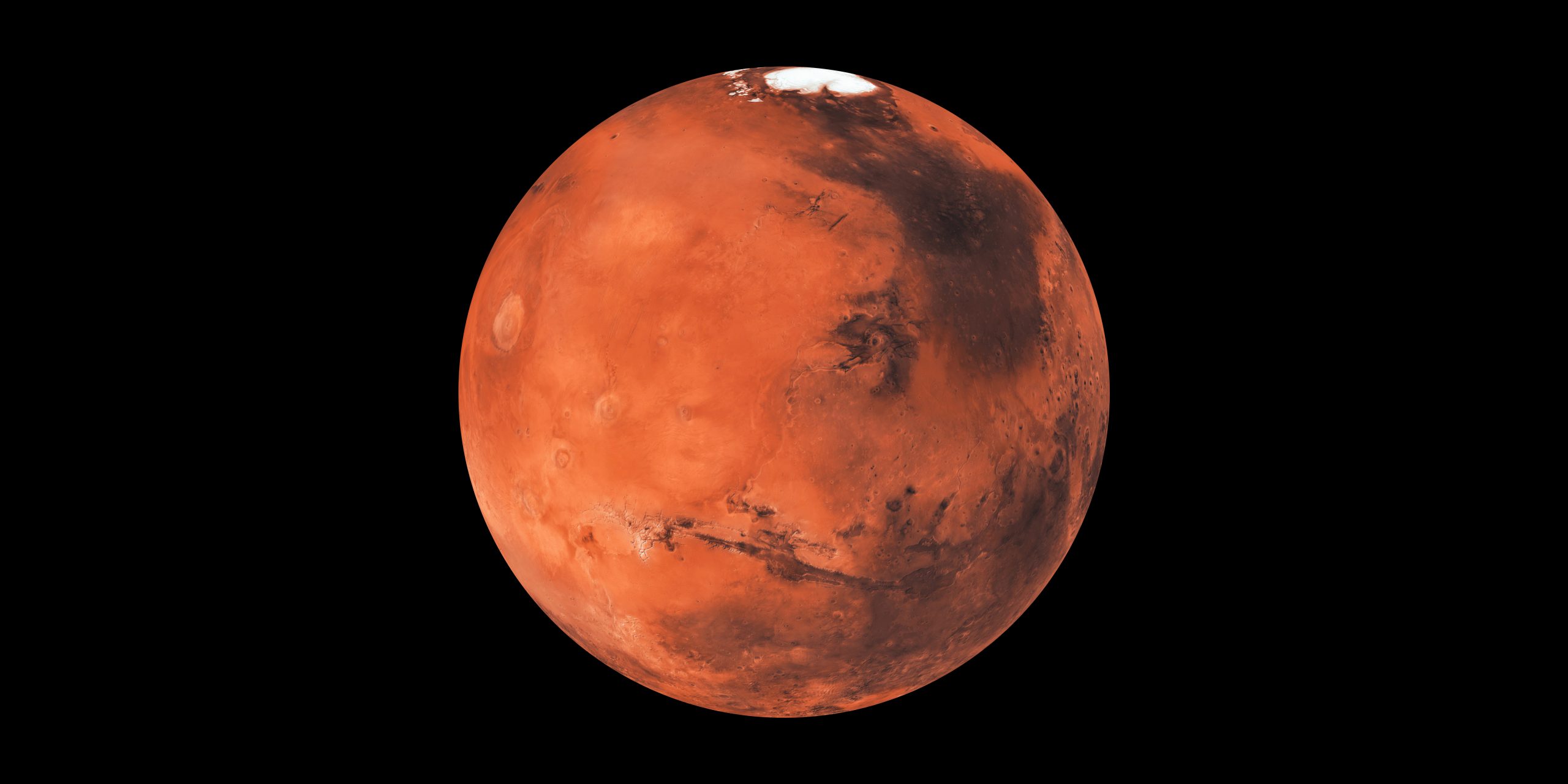Mars, often referred to as the “Red Planet,” has long captured the imagination of humanity as a potential abode for life and a target for exploration.
Mars, the fourth planet from the Sun, is a terrestrial planet with a thin atmosphere composed primarily of carbon dioxide. Its distinctive reddish appearance is due to iron oxide, or rust, covering much of its surface. With a diameter of about half that of Earth, Mars has intrigued astronomers for centuries with its seasonal changes, polar ice caps, and diverse geological features.
Mars boasts a diverse landscape characterized by vast plains, towering volcanoes, deep valleys, and ancient river channels. The planet’s surface is marked by impact craters of various sizes, evidence of past asteroid and comet impacts. The largest volcano in the solar system, Olympus Mons, rises nearly 22 kilometers (14 miles) above the Martian surface. Valles Marineris, a system of interconnected canyons stretching over 4,000 kilometers (2,500 miles), is one of the most prominent geological features on Mars.

Despite its thin atmosphere, Mars experiences weather phenomena such as dust storms, clouds, and seasonal changes. Dust storms can engulf the entire planet and last for weeks or even months, affecting surface operations for robotic rovers and landers. The Martian atmosphere, composed mainly of carbon dioxide with traces of nitrogen and argon, is not conducive to supporting human life without significant life support systems.
One of the most compelling questions about Mars is whether it harbors or once harbored life. Evidence from past missions suggests that Mars was once a warmer, wetter planet with conditions conducive to life as we know it. Ancient river channels, lake beds, and mineral deposits hint at a more hospitable past. The search for life on Mars continues with missions focused on exploring past habitable environments and analyzing Martian soil and rock samples for signs of microbial life.
Humanity’s fascination with Mars has led to numerous missions aimed at studying the planet’s surface, atmosphere, and geology. NASA’s Mars rovers, including Spirit, Opportunity, and Curiosity, have provided invaluable data about Martian soil, rocks, and atmospheric conditions. The European Space Agency’s Mars Express orbiter has mapped the planet’s surface and studied its atmosphere, while India’s Mars Orbiter Mission (Mangalyaan) and China’s Tianwen-1 mission have contributed to our understanding of Mars from orbit.

The exploration of Mars is poised to enter an exciting new phase with upcoming missions focused on sample return, human exploration, and potential colonization. NASA’s Perseverance rover, launched in 2020, aims to collect rock and soil samples for future return to Earth. The Artemis program, led by NASA, aims to return humans to the Moon as a stepping stone for future crewed missions to Mars. Private companies like SpaceX have ambitious plans for Mars colonization, envisioning a future where humans live and work on the Red Planet.
Mars, our red neighbor in the cosmos, continues to captivate scientists and space enthusiasts alike with its mysteries and potential for discovery. From its diverse geological features to the search for signs of life, Mars represents an intriguing destination for future exploration and scientific inquiry. As we continue to unravel the secrets of the Red Planet, we move closer to answering age-old questions about our place in the universe and the possibility of life beyond Earth.














